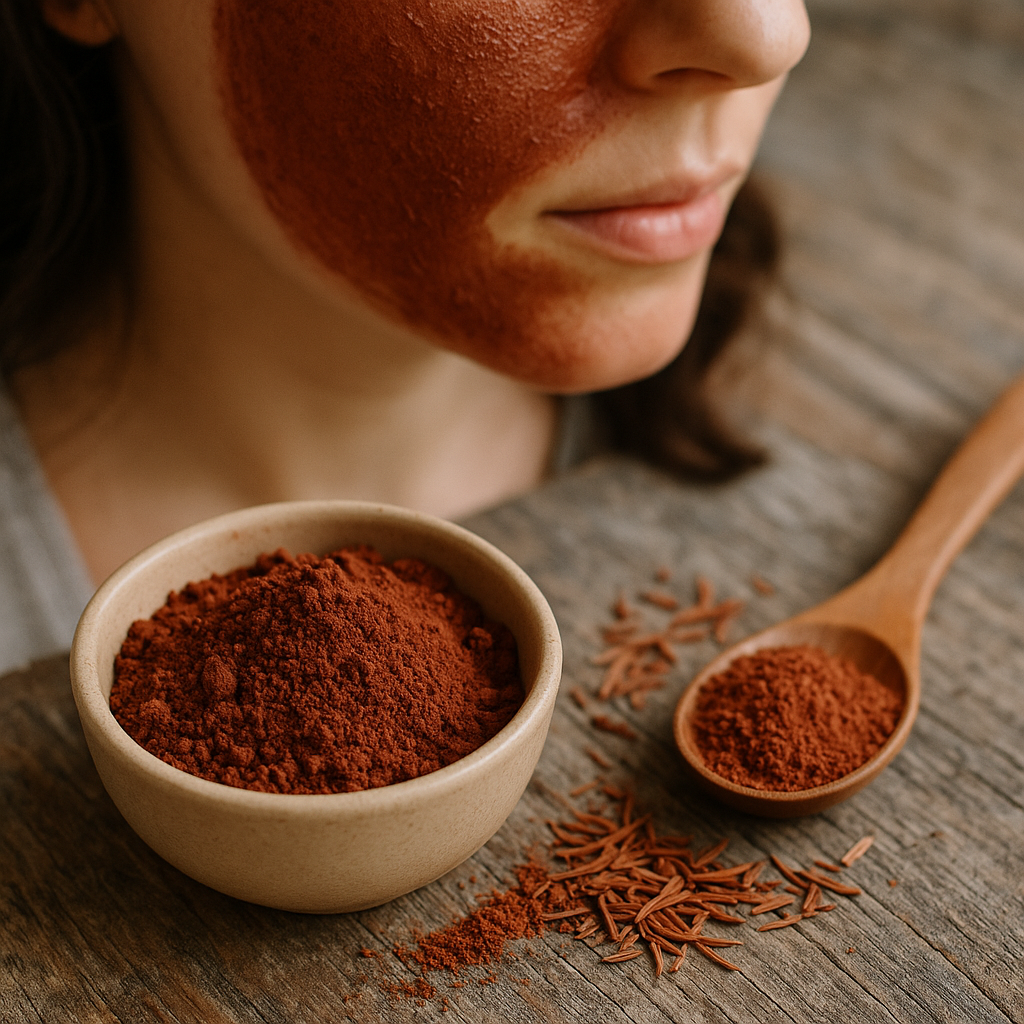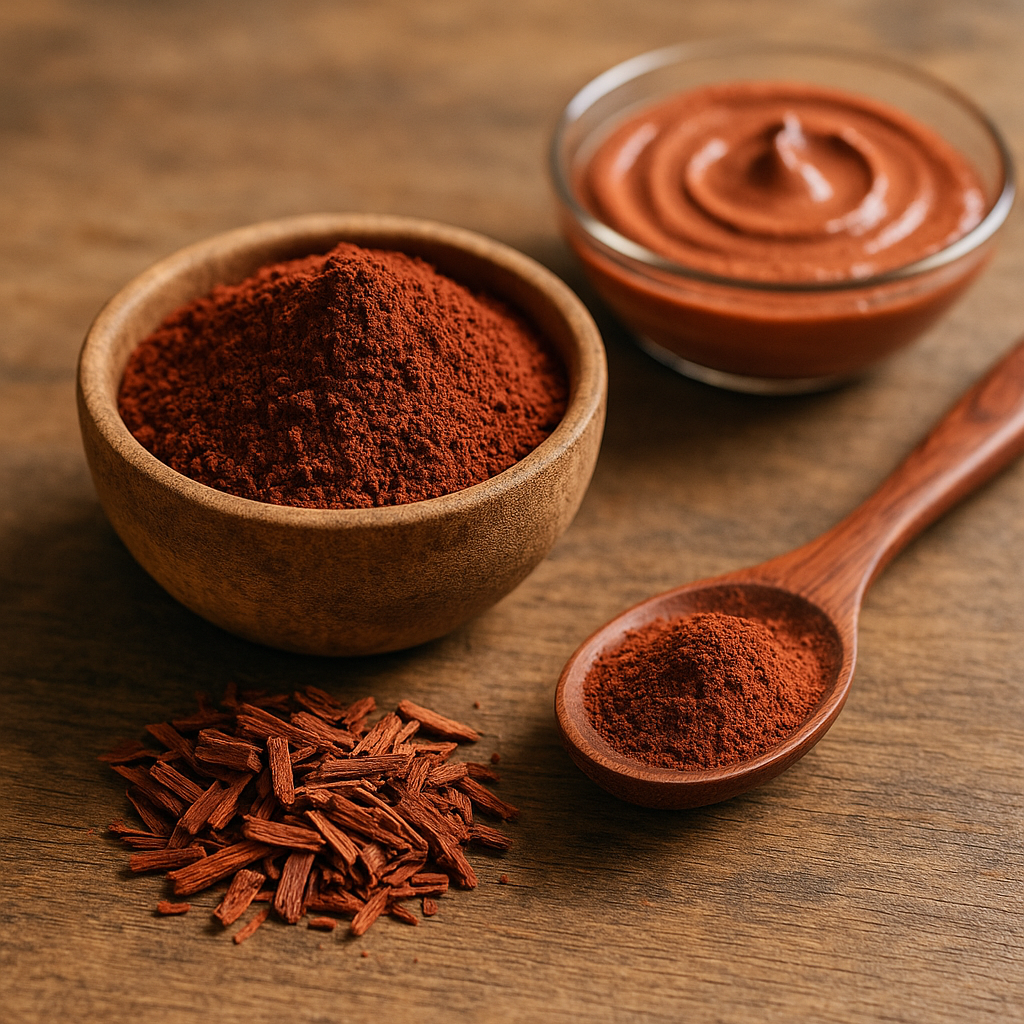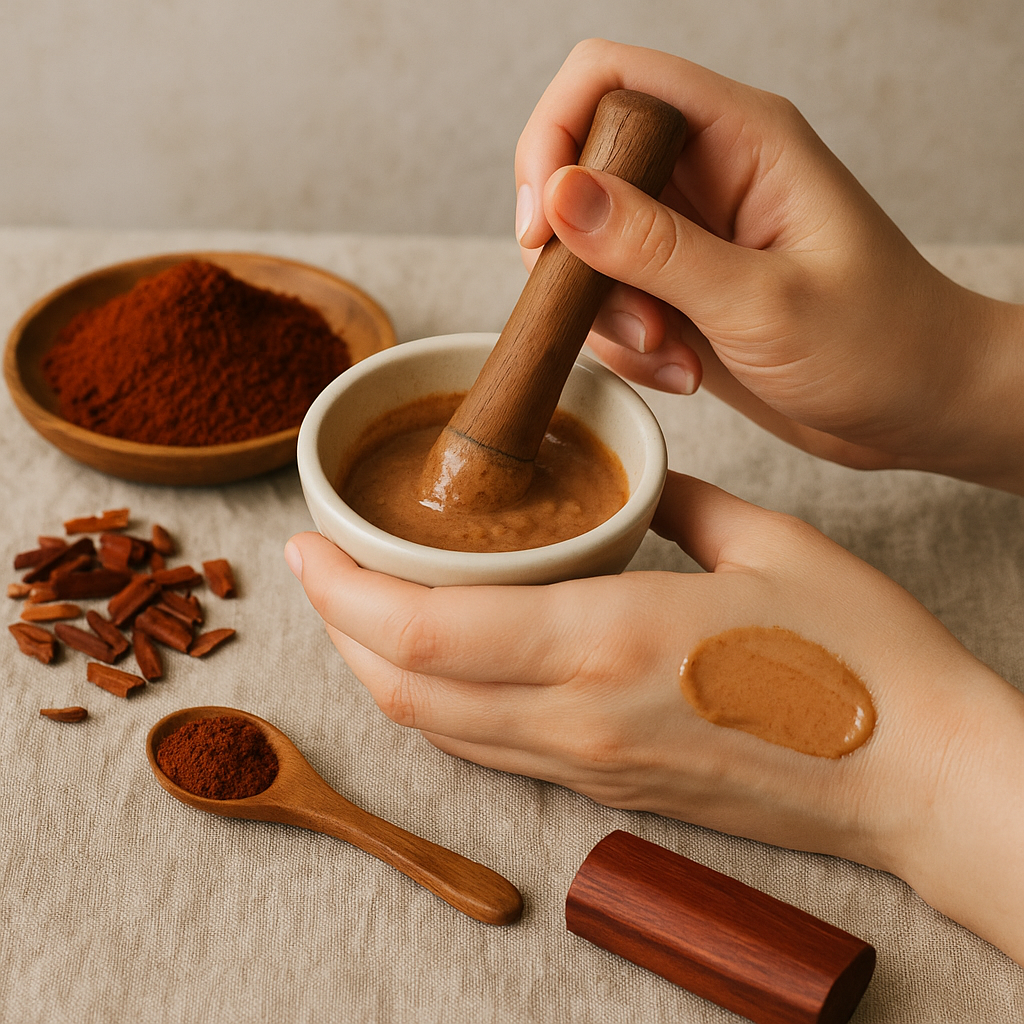Ask Ayurvedic doctor a question and get a consultation online on the problem of your concern in a free or paid mode. More than 2,000 experienced doctors work and wait for your questions on our site and help users to solve their health problems every day.
Shop Now in Our Store
What Is Red Sandalwood Used For: Ayurvedic Benefits and Applications

Ever wondered what is red sandalwood used for beyond just being a fancy name in herbal stores? Turns out, this ancient ingredient has some serious street cred in the world of Ayurveda, beauty care, and holistic healing. Whether you're looking to clear up stubborn skin issues, improve your overall wellness, or just curious about red sandalwood benefits, you're in the right place.
This vibrant red-hued wood has been treasured for centuries—not just in India, but globally. From being ground into a fine powder for skincare to being brewed in decoctions for detox, red sandalwood has quietly carved out a spot in traditional medicine cabinets. But what makes it so special? And more importantly, how can you use it? This guide will walk you through the red sandalwood uses that matter most—plus some DIY tips, warnings, and FAQs you’ll want to stick around for.
What Is Red Sandalwood and How It Differs from White
Botanical Profile and Origins
Let’s get one thing straight—red sandalwood is not the same as the fragrant white sandalwood you might already know. Known botanically as Pterocarpus santalinus, red sandalwood is native to southern India, particularly the Seshachalam hills of Andhra Pradesh. It’s a slow-growing tree with deep reddish heartwood that gives it both its name and value.
Unlike white sandalwood, which is loved for its aroma, red sandalwood has almost no scent. Instead, it's prized for its medicinal properties, vibrant pigment, and healing effects. In fact, red sandalwood is used for both external and internal treatments in traditional practices.
Red Sandalwood in Ayurvedic Texts
In Ayurveda, red sandalwood (known as Rakta Chandana) has been referenced in classic texts like the Charaka Samhita and Sushruta Samhita. It’s said to possess cooling, antiseptic, and anti-inflammatory properties, making it a go-to for treating anything from skin eruptions to digestive problems.
It’s classified as Sheetala (cooling) and Rakta-Pittahara (blood-purifying and Pitta-dosha balancing). That’s a fancy way of saying it helps detoxify the blood and cool down inflammation—two things most of us could probably use a bit more of in today’s stressed-out world, right?

Red Sandalwood Benefits for Health and Wellness
While skincare tends to hog the spotlight, the uses of red sandalwood extend far beyond beauty. Internally, it’s used in Ayurvedic medicine to support liver function, improve digestion, and treat fever, especially those associated with high Pitta imbalances.
Because it’s a natural blood purifier, red sandalwood can also help with ailments linked to toxins in the bloodstream—things like chronic skin issues, joint pain, and even some respiratory troubles. However, it's not usually taken raw or in large doses—it’s carefully processed into decoctions or powders by herbalists.
That said, always consult a healthcare professional or Ayurvedic expert before using it internally. Some people might be allergic or simply not suited to its intense properties. Just ‘cause it’s natural doesn't mean it’s for everyone, you know?

Red Sandalwood Uses for Skin and Face
When it comes to natural skincare remedies, red sandalwood is a bit of a hidden gem. While turmeric and aloe often steal the limelight, red sandalwood for face treatments can offer some seriously impressive results—if you know how to use it right. Whether you’re dealing with breakouts, dull skin, or stubborn pigmentation, the red sandalwood uses for skin go deeper than you might think.
Red Sandalwood for Acne, Scars, and Blemishes
One of the biggest reasons people turn to red sandalwood is to tackle acne—and not just the occasional pimple, but the full-blown, confidence-shaking kind. Thanks to its antibacterial and anti-inflammatory properties, red sandalwood powder helps reduce breakouts by calming irritated skin and controlling excess oil (hello, sebum!).
Plus, its cooling nature helps reduce redness and swelling. So if you’ve been overdoing it with chemical-based products, red sandalwood might just be the reset your skin needs.
Another cool thing? Over time, consistent use can help fade acne scars and blemishes. While it won’t give you overnight miracles—let’s be honest, what really does?—you’ll likely notice a brighter, more even skin tone after a few weeks of use.
How to Use Red Sandalwood for Skin Whitening
This one’s a little controversial, so let’s be clear: “skin whitening” here doesn’t mean changing your natural skin color. Instead, it refers to reducing hyperpigmentation, dark spots, and sun damage to give you a more even and radiant complexion.
Here’s how to use red sandalwood for skin whitening naturally:
-
Mix 1 tsp of red sandalwood powder with 1 tbsp of raw milk or rose water.
-
Apply it evenly on clean skin.
-
Let it sit for 15–20 minutes.
-
Rinse with lukewarm water and gently pat dry.
Do this 2–3 times a week. It’s gentle enough for most skin types, but do a patch test first—because irritation is not a vibe.
Note: There’s a lot of misinformation out there about "whitening." The real benefit of red sandalwood use lies in its ability to give your skin a natural glow by reducing dullness, inflammation, and uneven tone—not in altering your inherent beauty. That part's already perfect!

Popular Red Sandalwood Face Masks and DIY Recipes
If you’re into DIY skincare (and honestly, who isn’t these days?), there are tons of easy, effective red sandalwood face mask recipes you can try at home. Here are a few reader faves:
1. Red Sandalwood + Turmeric Mask (for brightening):
Mix 1 tsp red sandalwood powder, ½ tsp turmeric, and a splash of milk. Great for reducing dark spots and refreshing tired skin.
2. Red Sandalwood + Honey (for acne):
Combine red sandalwood powder with raw honey to soothe breakouts and heal inflammation. Bonus: It smells amazing.
3. Red Sandalwood + Aloe Vera (for sensitive skin):
Gentle and cooling. Helps calm irritation, especially if you’ve been out in the sun too long.
Remember—consistency is key. One mask won’t change your skin overnight, but a routine that includes red sandalwood uses for face can really boost your skincare game over time.
How to Use Red Sandalwood Powder Effectively
Alright, so you've got your red sandalwood powder—now what? The versatility of this stuff is actually kinda wild. Whether you’re mixing it into face masks, body packs, or even herbal teas (yes, really), knowing the right way to use red sandalwood can make all the difference.
First up, always go for pure, organic red sandalwood powder. A lot of stuff out there is adulterated or mixed with fillers. The powder should be a rich, reddish-brown and feel slightly gritty, not silky smooth (weird, but true). That’s how you know it’s the real deal.
Here are a few general use tips:
-
Store it in an airtight container away from moisture.
-
Don’t use metal bowls when mixing—it can react with some of the herbal properties.
-
For dry skin, combine with hydrating ingredients like honey or yogurt.
-
For oily or acne-prone skin, stick with rose water or aloe vera gel.
One weird mistake people make? Using it too often. While it’s natural, overuse can dry out your skin or cause irritation. 2–3 times per week is plenty.

Internal and Traditional Medicinal Uses of Red Sandalwood
So, is red sandalwood just for skin? Nope. In traditional Ayurvedic and Unani systems, red sandalwood is used for internal ailments too. Although it's less common nowadays, herbal practitioners still recommend it (under guidance) for certain conditions.
Common traditional uses include:
-
Detox teas and decoctions to purify blood
-
Natural remedy for fever, especially those linked to Pitta excess
-
Supporting liver function and reducing inflammation
-
Soothing urinary tract infections (often combined with other herbs)
But here’s the thing: you really shouldn’t just DIY these internal treatments unless you know what you’re doing. Or unless your grandma’s a certified Vaidya or Hakim 😅. The use of red sandalwood internally can be potent, and the wrong dosage can backfire.
Precautions and Who Should Avoid Using Red Sandalwood
As amazing as it is, red sandalwood isn’t for everyone. A few quick safety notes:
-
Pregnant or breastfeeding women should avoid internal use.
-
If you have very dry or sensitive skin, do a patch test before applying.
-
Allergies are rare but not impossible—if you feel itchy, red, or inflamed after use, stop immediately.
-
Don't inhale the powder (yep, someone tried it)—it’s not meant to be airborne.
Also, don’t confuse red sandalwood with white sandalwood when buying. The two have totally different properties, and you won’t get the same results. Labels can be sneaky.
Conclusion
So, what is red sandalwood used for? A whole lot more than you might’ve thought, right? From its place in ancient Ayurvedic rituals to modern skincare routines, the uses of red sandalwood are as practical as they are powerful.
Whether you’re experimenting with red sandalwood for face masks, looking to brighten your complexion, or exploring its inner healing properties, this vibrant red wood has something to offer. Just remember: go natural, stay consistent, and treat your body with the same respect it gives you.
Try it out, share your results, and pass this article along to someone who might need a skincare upgrade without the chemical chaos. 🌿
FAQs
Q: Why is red sandalwood illegal in India?
A: Red sandalwood is protected under India’s forest laws due to over-harvesting and illegal trade. It’s endangered in the wild and requires government permits to cultivate and export. That’s part of why it’s so rare and valued.
Q: Why is red sandalwood very costly?
A: Its slow growth rate, limited geographical availability, and restricted legal trade make it super expensive. Plus, demand from skincare, herbal, and even luxury industries drives up the price.
Q: Does red sandalwood have any side effects?
A: Generally, it’s safe for most people when used topically. But too much can dry out skin, and internal use should always be supervised. If you’re prone to allergies, do a patch test before using.
👉 Found this helpful? Share it with a friend who needs to ditch the chemicals and go herbal. And hey, if you try any of the face masks—send pics! We’d love to see how red sandalwood uses are working for you.
This article is checked by the current qualified Dr Sujal Patil and can be considered a reliable source of information for users of the site.

